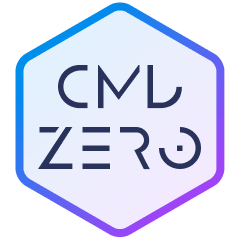The new pitch imperatives for early-stage startups

Early stages of the venture-backed startup lifecycle can be daunting. There is immense pressure to deliver a viable product, land meetings with investors, and secure the necessary funding to keep going—all at breakneck speed. Companies that graduate from this phase of the lifecycle to growth-stage ScaleUp have always been a rare breed, but with the current market backdrop and venture dollars that are difficult to come by, those companies are rarer than ever.
At TechCrunch Disrupt in September, I had the opportunity to be pitched on stage by five fantastic early-stage companies as part of Disrupt’s Startup Battlefield. Afterwards, my colleague Sophie Starck and I synthesized three imperatives that we believe are applicable to any founder looking to craft a pitch that cuts through today’s market malaise and captivates investors.
The importance of ‘why now’
Venture capital is just one of many ways to finance a business, and it is best suited for when speed of growth is a primary consideration. In turn, rapid growth requires more than a solution to a problem—it requires identifying an acute pain point that demands immediate attention. Regardless of how robust a product may be, without a clear articulation of the urgency to adopt it, there is risk of stagnating growth and ultimately, misalignment with VC investors.
A compelling pitch expresses the ways in which market tailwinds are decidedly on the company’s side. These tailwinds could be new regulation that forces organizational change, a paradigm shift in consumer behavior, or fundamentally novel technology that makes what seemed impossible possible. Pinpointing the “why now” is crucial for realizing a venture-backable growth curve.
Dylan Fox started building AssemblyAI, a platform that allows any company with voice data to standup AI applications, back in 2017. In the earliest days of Dylan’s journey, many people couldn’t distinguish AssemblyAI from general speech-to-text transcription services, and few were thinking about how an intelligence layer on top of their voice data might unlock new experiences. But Dylan had conviction that as the volume of audio and video data swelled exponentially thanks to the likes of Spotify and Zoom, so too would the desire to leverage that data in creative ways. Later, when ChatGPT brought LLM capabilities to the foreground and the floodgates opened, he stood ready to capture even more demand. Now, nearly every company that has proprietary access to voice data is actively thinking about how to enhance their offerings with AI. The market tailwinds have been decidedly on Dylan’s side, and the company’s growth trajectory reflects this exhilarating context.
The power of tangible customer stories
None of the Startup Battlefield judges had personal experience managing workforces across multiple farms or collecting real-time measurements on a construction jobsite, but the pitches we heard from Agri-Trak and REEKON Tools brought these challenges to life through their stories. When talking to investors, it’s tempting to simply check the boxes: product, competitive landscape, traction, etc. While these are all important topics, hopping from one to another can leave listeners dazzled by the category buzzwords, but confused by what you actually do. Few investors will ever have the profound understanding of a space that a founder has, but narrative-driven pitches are especially effective in bringing them up the learning curve.
Customer stories are not only more engaging than any slide deck, but also address several disparate questions in one fell swoop: Who is your customer? What do they care about? How did they accomplish this task before you? What’s not ideal about that state of the world? What were their alternatives? How did they find you? Why did they choose you? One thoughtful story can make the worldview in which your startup succeeds feel obvious and inevitable.
Our first meeting with Bill Dobie of Sedna, an enterprise-grade communication platform designed for the maritime industry, was just Bill walking through exactly how one of his customer’s day-to-day looked before versus after implementing the product. At this customer, Sedna was being used by every member of a 20-person shipping operations team for more than three hours a day, every day. By dynamically threading cross-functional conversations, automatically de-duping emails with redundant information, allowing for real-time document collaboration within the inbox, and “making search really work,” users could spend less time sorting emails and more time driving the business. We were very excited to hear that Bill was in active conversations to expand his contract with said customer from 20 users to 200+ users.
Two sides of the moat coin: product and go-to-market
“Moat” is a nebulous concept. Most founders have a pithy response to: “How is what you’re doing different (and implicitly, better) than the competition?” But it’s easy to confound present success with enduring ability to win. Moat begs the question: “How will you sustain differentiation over time?”
The answer can lie in product. Perhaps, the value of your product is reinforced as your customer base scales. Perhaps, your product has prohibitive switching costs because it is fused into daily workflow or integrated into so many core systems. Perhaps, your product becomes the system of record itself.
While it’s natural to think about moat in terms of what you’re selling, it’s easy to overlook the moat that can also be derived from how you’re selling. An unfair advantage in acquiring or monetizing customers can be the reason why one business thrives while another struggles. This approach often necessitates rethinking traditional business models.
The most exceptional companies unlock the product and go-to-market sides of the moat coin simultaneously, and we saw this firsthand through our partnership with Blake Murray, founder of Divvy. Before companies like Divvy, Brex, and Ramp, SMBs paid SaaS fees for software to manage spend policies and expense reports; separately, they applied for corporate cards through a bank. In bringing these disparate components together, Blake was able to offer a meaningfully better product experience that made expense reports obsolete and corporate cards frictionless to issue. But just as importantly, by monetizing via interchange on the corporate cards, he was able to subvert incumbents entirely with pricing customers couldn’t refuse: SaaS fees of $0 per user per month.
More recently, founders like Daniel Simon of Coast are unveiling “Act Two” of this category. Coast is also a spend management solution with an embedded payments revenue model, but it is tailored specifically for businesses dealing with the added complexity of operating commercial fleets. By focusing on a discrete segment, Daniel is leaning into both deeper product differentiation (e.g., integrations with telematics solutions like Samsara and fleet management tools like Fleetio) as well as unique go-to-market tactics (e.g., partnerships with vertical-specialist vendors like Discount Tire) to bolster moat.
No matter the market backdrop, VCs are all ears for early-stage startups that can nail these elements of the pitch. When you find yourself on stage, crystallizing your “why now” with credibility, showcasing your value proposition through real customer stories, and defining points of lasting differentiation in both what AND how you’re selling will put you in the spotlight.
This article originally appeared in TechCrunch. Photo courtesy TechCrunch. Insight is an investor in AssemblyAI, Sedna, Divvy and Coast.





